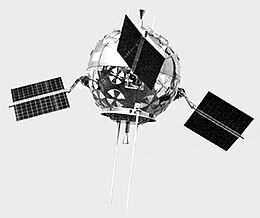This article includes a list of general references, but it lacks sufficient corresponding inline citations. (May 2020) |
 Pioneer P-31 lunar probe | |
| Mission type | Lunar orbiter |
|---|---|
| Operator | NASA |
| Mission duration | Launch failure |
| Spacecraft properties | |
| Manufacturer | TRW |
| Launch mass | 175.0 kilograms (385.8 lb) |
| Start of mission | |
| Launch date | 15 December 1960, 09:10 UTC |
| Rocket | Atlas D Able |
| Launch site | Cape Canaveral LC-12 |
Pioneer P-31 (also known as Atlas-Able 5B or Pioneer Z) was intended to be a lunar orbiter probe, but the mission failed shortly after launch. The objectives were to place a highly instrumented probe in lunar orbit, to investigate the environment between the Earth and Moon, and to develop technology for controlling and maneuvering spacecraft from Earth. It was equipped to take images of the lunar surface with a television-like system, estimate the Moon's mass and topography of the poles, record the distribution and velocity of micrometeorites, and study radiation, magnetic fields, and low frequency electromagnetic waves in space. A midcourse propulsion system and injection rocket would have been the first United States self-contained propulsion system capable of operation many months after launch at great distances from Earth and the first U.S. tests of maneuvering a satellite in space.